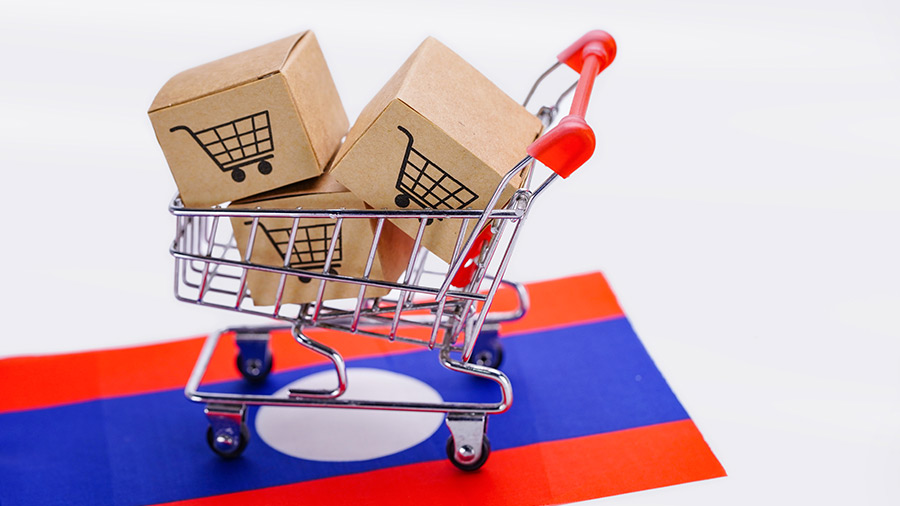The online shopping revolution has radically transformed the UK retail landscape over the past decade. While many brick-and-mortar retailers have struggled to adapt, fashion ecommerce has emerged as one of the biggest winners.
The Ascendance of Online Fashion
Online shopping has seen exponential growth across all categories in the UK. However, fashion has been one of the standout performers for ecommerce. According to industry reports, the value of online fashion sales increased by over 20% year-on-year in 2021.Fashion now accounts for approximately 15% of total UK ecommerce and this share continues rising each year.
Several factors have contributed to the ascendance of online fashion shopping. Younger generations, especially Millennials and Gen Z, are much more digitally native and comfortable making purchases online. The convenience of browsing, comparing prices and products from home has made online an attractive shopping destination for clothes and accessories. With every new season, fashion-focused retailers are expanding their collections and categories available online.
The Rise of Fast Fashion Players Online
UK Fashion Ecommerce brands were quick to recognize the opportunities presented by online shopping. Retailers like ASOS, Boohoo, PrettyLittleThing and Missguided essentially grew up online, perfecting their digital experience and supply chain to offer ever-changing collections at competitive price points. With strong own-brands and influencer partnerships, they have come to dominate the online youth fashion space in the UK.
Their continuous investment in new categories like maternity, plus sizes, beauty and homeware has supercharged growth. ASOS recently reported sales of over £3 billion, with over 80% coming from online channels. Fast fashion now leads the charge in terms of online share of sales versus traditional high street chains. Their rapid delivery, generous returns policies and engagement on social media have redefined expectations for online fashion shopping experiences.
Multichannel Strategies Prove Critical
While pureplay online retailers thrived, legacy high street names struggled with slow adaptation to changing consumer patterns. However, those that developed strong multichannel strategies saw their fortunes improve dramatically.
Marks & Spencer launched successful initiatives like Click & Collect to fuse stores and online. Its food business also gets a boost from being accessible both in-store and via Ocado delivery. John Lewis achieved over 50% of total sales online in 2021 by integrating stores and web operations tightly. Customers can return online purchases at stores or try items before buying. Such seamless multichannel models have enabled these retailers to rediscover growth.
Independent Fashion Blossoms Online
The thriving independent fashion scene in the UK has found an accelerated growth path online as well. Etsy reported a surge in UK sellers during the pandemic as makers turned to its place. Homegrown platforms like NotOnTheHighStreet and BlackOak showcased British design talent globally. Instagram also became a popular storefront for emerging fashion businesses.
The industry-wide shift online opened up new opportunities for international expansion without major capital investment in physical stores. Digital platforms lowered barriers for independent designers and brands to reach wider audiences and scale up globally with lower overheads than traditional retail. The result has been an explosion of talented emerging fashion businesses driving UK creativity worldwide through ecommerce channels.
Mobile Commerce Powers Online Growth
Mobile platforms have played a transformative role in taking UK fashion ecommerce to new heights. People researching, browsing, trying on items, making purchases – every stage of the shopping journey now readily happens on phones and tablets.
Statistics show mobile now accounts for over 70% of all online visits in the UK. This has significant implications for fashion retailers as people tend to shop more impulsively on mobile. Features like buy buttons, personalization and social proof make on-the-go purchases easy. Live video, augmented reality try-ons and personalized styling recommendations also enhance mobile shopping experiences.
Leading fashion ecommerce players like ASOS, Very and Boohoo are heavily invested in optimizing their interfaces, personalized services and speed for mobile transactions. Multichannel returns powered by QR codes on receipts help complete transactions seamlessly. Online platforms are focused on delivering mobile-first, immediacy-driven experiences that tap into on-the-go shopping behaviors. This will sustain the momentum of UK fashion ecommerce into the future.
Sustainable & Ethical Fashion Finds Its Voice
Rising demand for more sustainable fashion options has boosted a new breed of online-led brands and retailers focused on ethical and eco-friendly practices. Sites like Finisterre, People Tree and Vaute Couture give conscious consumers easy access to responsibly made clothing, accessories and beauty products.
An increasing number of independent designers promote their sustainable credentials openly through social channels and websites to appeal to values-driven younger audiences. Mainstream multi-brand retailers are also broadening their sustainable options, with some pivoting entirely to become certified B-Corps.
Digital platforms allow transparent sharing of ethical sourcing and production practices difficult to verify in traditional stores. Crowdfunding campaigns and community features on sustainable fashion websites galvanise passionate niche audiences too. Overall, online channels have amplified the voice, reach and influence of conscious fashion in Britain.
The Future Looks Bright for Online Fashion
From pioneering startups to legacy names, UK fashion retailers leveraging digital-first strategies seem best placed for continued growth. Even post-pandemic, consumer inclination toward online convenience and experience-led shopping will only increase. Investments aimed at optimizing logistics infrastructure, personalization technologies and omnichannel solutions will define competitive advantage.
Younger generations especially are likely to favor digital-first sustainable and indie brands that match their lifestyle aspirations. Clearly, the future remains bright for UK fashion ecommerce as it continues to ride the tremendous tailwinds created by the shift to online shopping. Multichannel integration and mobile-first experiences will be key priorities to maintain momentum in the decade ahead.
*Note:
1. Source: Coherent Market Insights, Public sources, Desk research
2. We have leveraged AI tools to mine information and compile it




